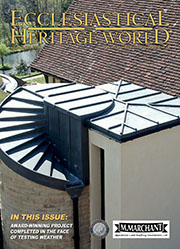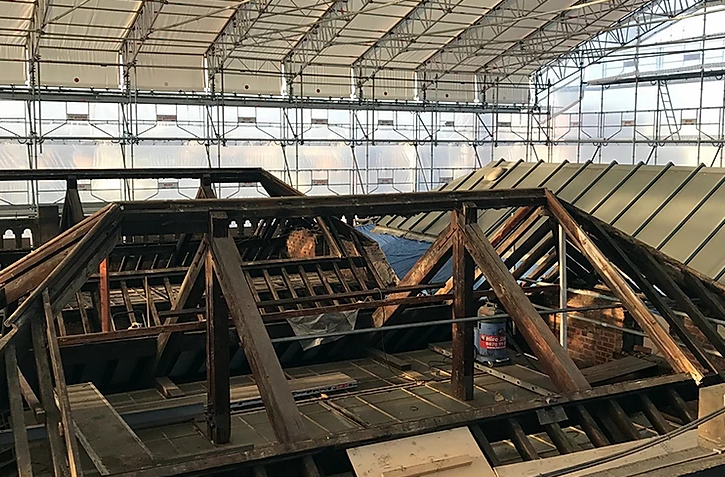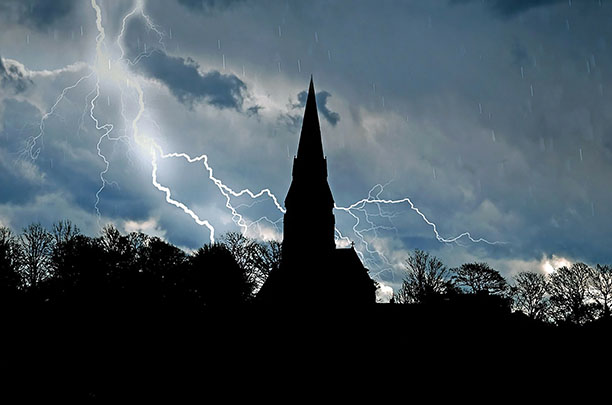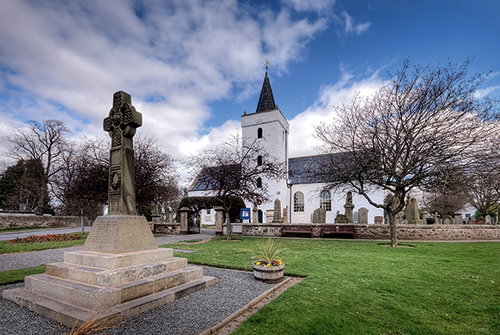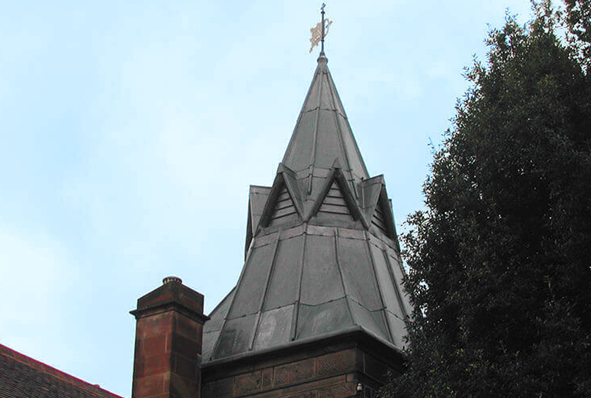Heritage Roofing
Heritage roofing - maintaining our iconic buildings
The UK is home to some of the most iconic buildings in the world, from stunning churches and cathedrals to historic stately homes. Each and every one of these remarkable feats of architecture requires regular maintenance to ensure they remain in the very best condition, allowing them to be enjoyed for generations.
Lightning Protection
When lightning strikes are you protected against this act of God?
The issue of lightning protection in churches is one that has exercised this publication for many years. In this four-part series of spotlights on the issue we will be revisiting various aspects of the subject, beginning with an overview of current thinking.
Traditional Lime
Lime: it’s better for buildings – and for the environment
It is now fairly well known that cement is not good for old buildings and that lime mortar should be used. But why? What are the advantages and what are the disadvantages? In order to begin to answer those questions it is necessary to understand the nature of traditional building, the process by which buildings used to be built, and how it differs from modern construction, the process by which we build today.
Audio Visual
Audio visual equipment in church buildings
This guidance is issued by the Church Buildings Council under section 55(1)(d) of the Dioceses, Mission and Pastoral Measure 2007. As it is statutory guidance, it must be considered with great care. The standards of good practice set out in the guidance should not be departed from unless the departure is justified by reasons that are spelled out clearly, logically and convincingly.
Read More...
CRE Events
All change at CRE: the UK’s ‘ideal church show’
The Christian Resources Exhibition (CRE), the UK’s largest church-related show, has changed hands in its 40th year and has been taken over by Quartz Business Media.
Insurance
You need to ensure that reasonable precautions are in place at your church to keep it safe for those who use it. To do this, you need to think about what might cause harm to people.
You will then need to decide if the precautions already in place are adequate. If they are not, you may need to identify further action to prevent any danger. When done formally, this is known as a risk assessment.
LPOW Grants
£23 million government package to support restoration of thousands of listed places of worship
Heritage Minister Sir Chris Bryant has announced that the Listed Places of Worship Grant Scheme will be extended into the next financial year, providing £23 million so that thousands of historical buildings, including churches, synagogues, mosques and temples, can carry out restoration work.
Lead Roofing
Lead is one of the oldest materials in the roofing industry and is still commonly used throughout the world today.
Lead roofing is a traditional roofing method which has been used in the industry for hundreds of years, and is therefore proven to be extremely reliable. Lead roofing, and sand-cast lead, in particular is ideal for old buildings such as churches or historical renovations, whereas milled lead roofing is a mass-produced alternative, used for precision and accuracy in homes and commercial buildings alike.
Home
Stirling Heads together at Castle for first time in more than 200 years
Stirling Heads together at Castle for first time in more than 200 yearsCabinet Secretary for Culture and External Affairs Fiona Hyslop today unveiled the new gallery that will display the original collection of Renaissance sculptures known as the Stirling Heads.
Ahead of the opening of the refurbished Royal Palace accommodation at Stirling Castle on Saturday June 4, Ms Hyslop revealed the new climate-controlled exhibition gallery.
On one of her first engagements since being appointed Cabinet Secretary, Ms Hyslop said:
“This is a wonderful and unique collection. The Stirling Heads have not been on display together since the ceiling onto which they were mounted was brought down in 1777 when the Castle served as a barracks. The re-creation of the Palace includes replica painted Heads which themselves are a marvel to look at, but it is also a real coup to showcase the three original Heads in their original home.
“I have had the opportunity to see this £12m project to re-create the Royal apartments within Stirling Castle as it has progressed, and I am thrilled that we are just days away from opening it to the public and the celebrations to mark the public opening.
“Potential visitors can also get a sneak preview of the “Castle Experience” by trying out the 3D fly-through of the Castle which uses innovative laser scanning technology produced in partnership between Historic Scotland and Glasgow School of Art’s Digital Design Studio.”
The Stirling Heads are large oak medallions – or roundels – hand carved by skilled craftsmen who created vivid images of classical heroes, kings, queens, courtiers and even imps.
A total of 34 Heads, some a metre across, have survived the centuries since their creation sometime after 1530. Many originally decorated the ceiling of the King’s Inner Hall at the heart of the Royal Palace and there is nothing quite like them anywhere else in the world.
Historic Scotland has 31 of the Heads in its care, and three original Heads from the National Museums of Scotland have now joined them in the new gallery.
The Cabinet Secretary added:
“The gallery is a modern space within the historic core of the Castle dedicated to showing the surviving Heads and explaining the significance they held. Throughout the Palace you see reflections of the international relationships and parallels with which James V wanted to be associated, and these Heads really exemplify that.
“New interactive displays allow visitors to use touch screens to find out more about the individual designs and even create their own colour palate for the Heads.
“The new gallery will allow also modern visitors to appreciate the intricacy of the Heads in much closer detail than any of James V’s courtiers could have enjoyed.”
Historic Scotland and the Glasgow School of Art’s Digital Design Studio, who together created the digital animation of Stirling Castle, have formed the Centre for Digital Documentation and Visualisation to carry out the “Scottish 10” project.
This is a £5m five-year project to laser-scan Scotland’s five World Heritage Sites (WHS) – the Neolithic Heart of Orkney, the Old and New Towns of Edinburgh, New Lanark, and the Antonine Wall as part of the Frontiers of the Roman Empire WHS, and St Kilda – and five international sites.
The “Scottish 10” team has already recorded Mount Rushmore in South Dakota, USA and will be flying to the Rani Ki Vav stepwell in Gujarat, India, later in the year to record it.
It has been agreed that a site in China and one in Japan will be part of the project but these have not been identified as yet.
The last international site has yet to be decided.







